Ms. McLaughlin arrives in medical with a limping gait favoring her right leg. You are the nurse in the clinic and note that she is grimacing every time she puts her foot down. The patient states that she was playing basketball and her foot was planted, but then she twisted her body to shoot the basket and felt a sharp pain in her ankle. When she gets up on the exam table and pulls up her pant leg, you see a swollen lateral ankle with slight ecchymosis around the ankle bone. The APRN evaluates the patient and diagnoses a sprained ankle. The nurse working with you asks what the difference is between a sprain and a strain….
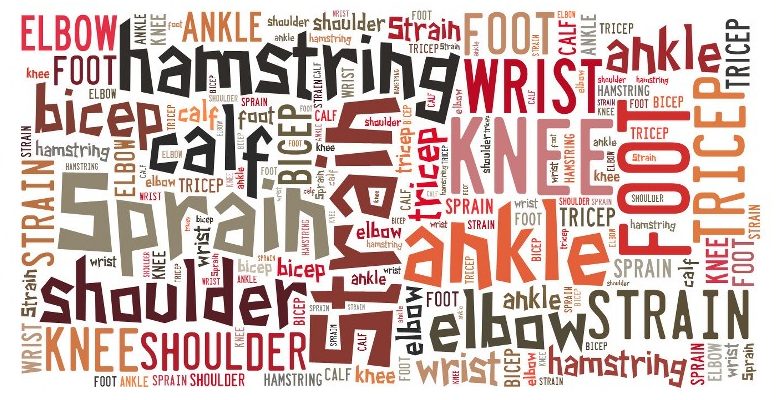
what is a sprain?
A sprain is an injury to a ligament, typically by over-stretching during a sudden pull. A ligament is made up of strong bands of tissue that connect bone to bone at a joint and gives it support. Falling, twisting, or getting hit can cause the joint to move out of its usual position, which in turn, can cause the ligaments around the joint to stretch. Common areas for a sprain to occur include the elbow, wrist, knee, ankle, and thumb.
A sprain causes inflammation and swelling. Often bruising results from internal bleeding around the injured joint, and there is an inability to move/use the joint. Sometimes, patients will report hearing a “pop” or feeling a tear when the injury occurs.
Sprains are graded by how much the ligament has been stretched and the amount of instability that resulted from the injury. The classification of sprains includes first degree, second degree and third degree.
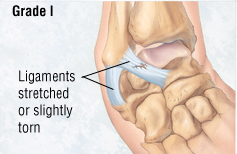
A first degree injury is considered the mildest. There is little tearing of fibers, pain, or swelling. The joint stability is intact.
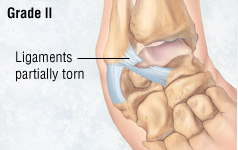
A second degree sprain has moderate pain, swelling, and joint instability.
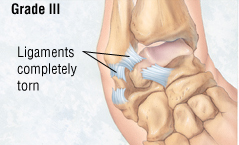
A third degree sprain is most severe, and includes a completely ruptured ligament, joint instability and severe pain and swelling. Other tissue damage in the area of the injury may also be noted.
what is a strain?
A strain is an injury to the muscle fibers and/or tendons. Tendons are fibers that attach muscles to bone. A strain may result from inflammation or overuse or unbalanced use. Most often, a strain occurs due to the over-stretching of the muscle/tendon beyond its limit or an overly-forceful contraction. A strain may cause pain, muscle spasm, muscle weakness, swelling, cramping, and trouble moving the muscle. Two common sites for a strain are the back and the hamstring muscle in the back of the thigh.
Strains are also classified from Grade 1 to Grade 3.
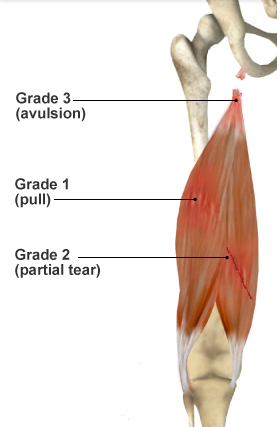
A Grade 1 strain is the mildest, and includes little fiber tearing, mild pain and tenderness at the injury site. There is full range of motion to the affected area.
A Grade 2 strain includes a torn tendon or muscle. It is typically painful with limited range of motion. There may be some swelling or depression at the area of injury.
A Grade 3 strain is indicated by limited or no movement. There is typically severe pain at first, then the injury may be painless.
Ibuprofen is a commonly ordered medication for sprains and strains in the correctional environment both by providers and through Nursing Guidelines/Protocols. In our next post, we will discuss the research surrounding ibuprofen and other NSAIDs that, perhaps, make them not the first choice for sprains and strains!
For more information, check out The Correctional Nurse Educator accredited class Sprains and Strains for the Correctional Nurse.
Please share an experience you have had caring for a patient with a sprain or strain in the correctional environment below!
Leave a Reply